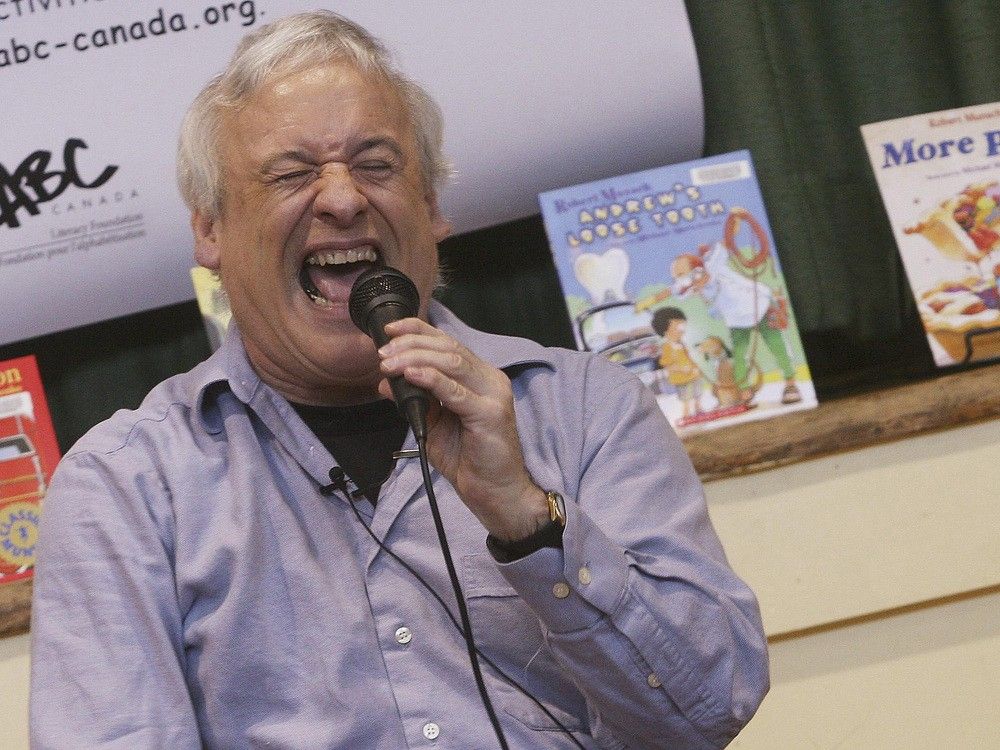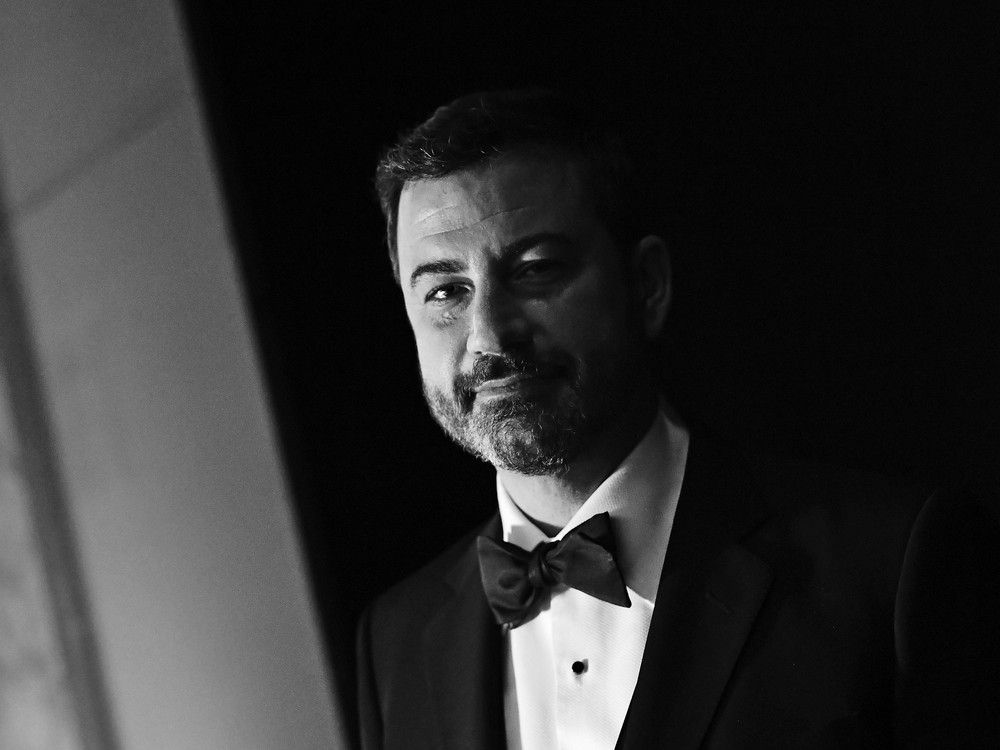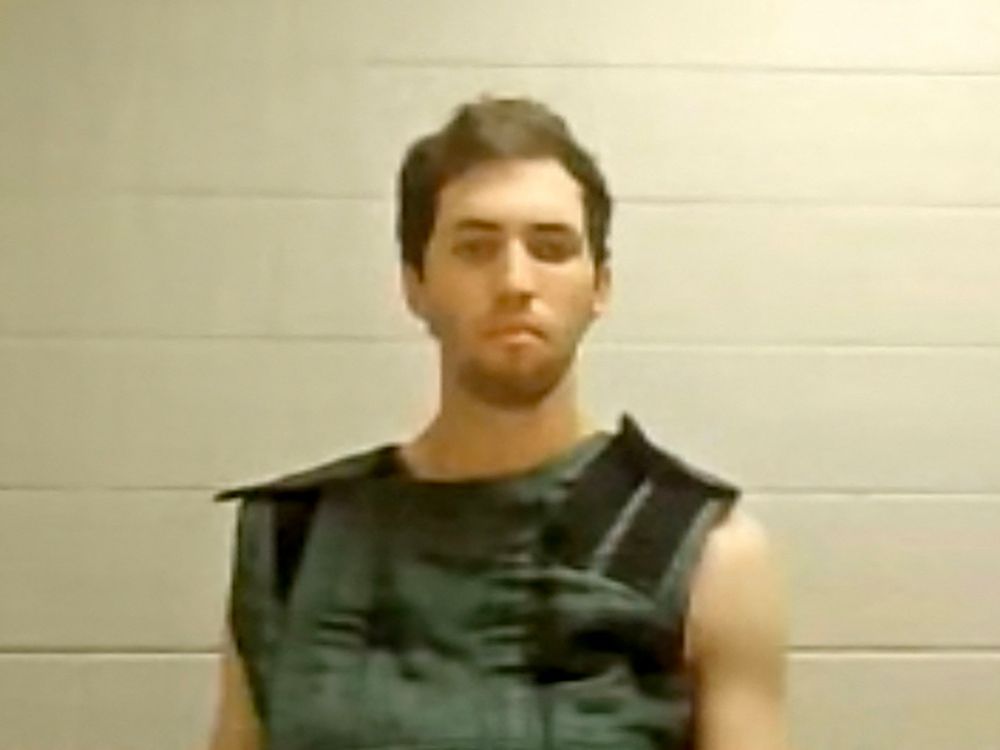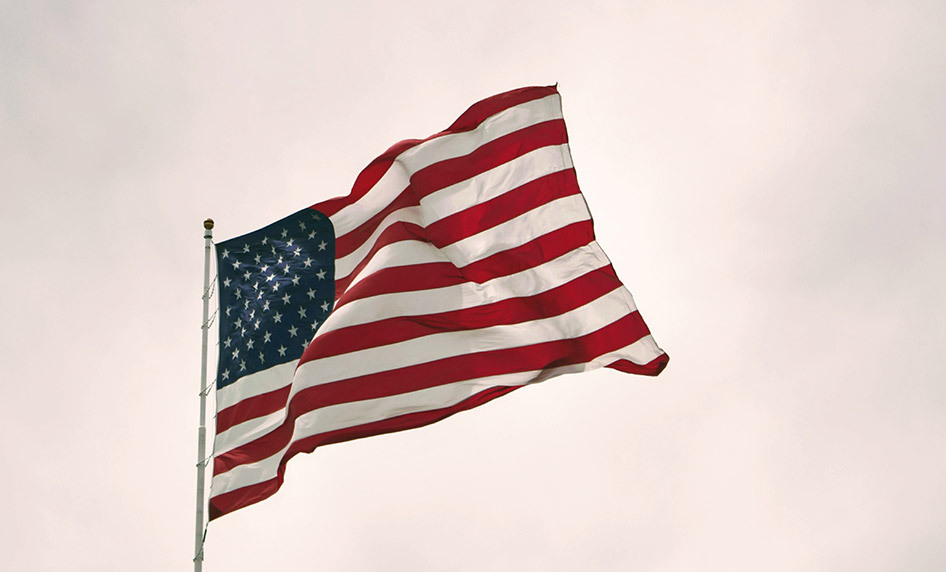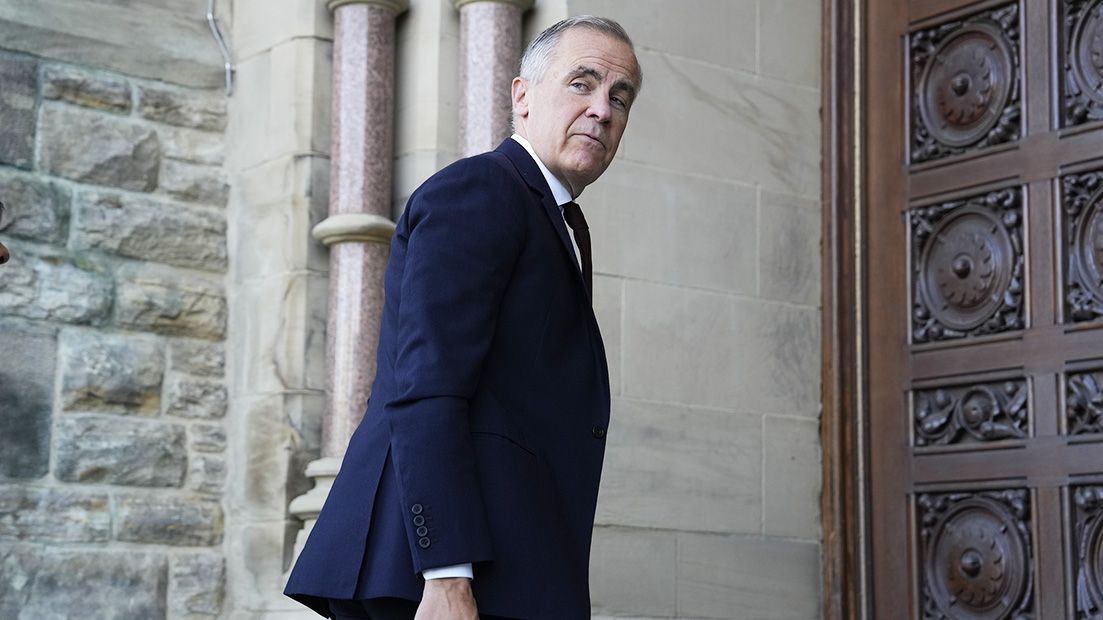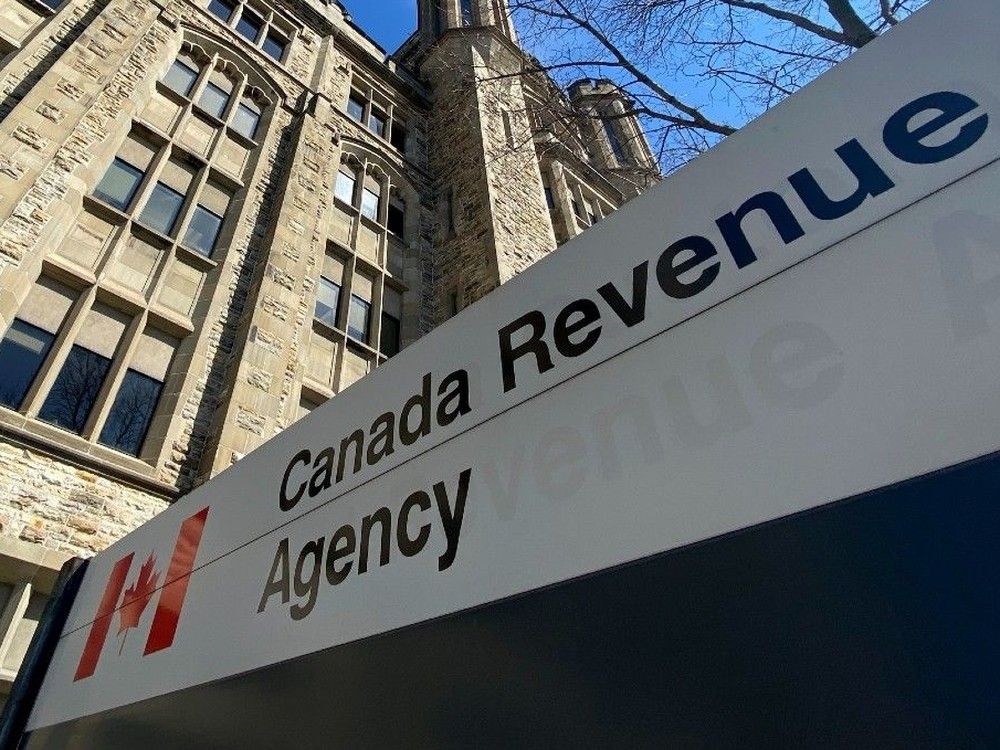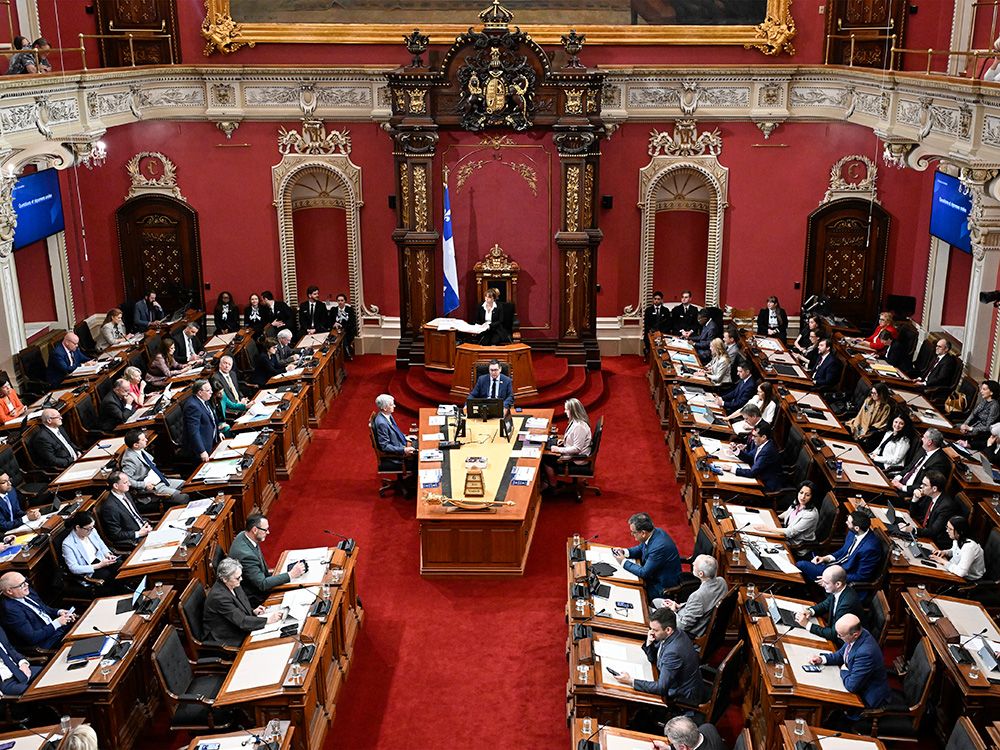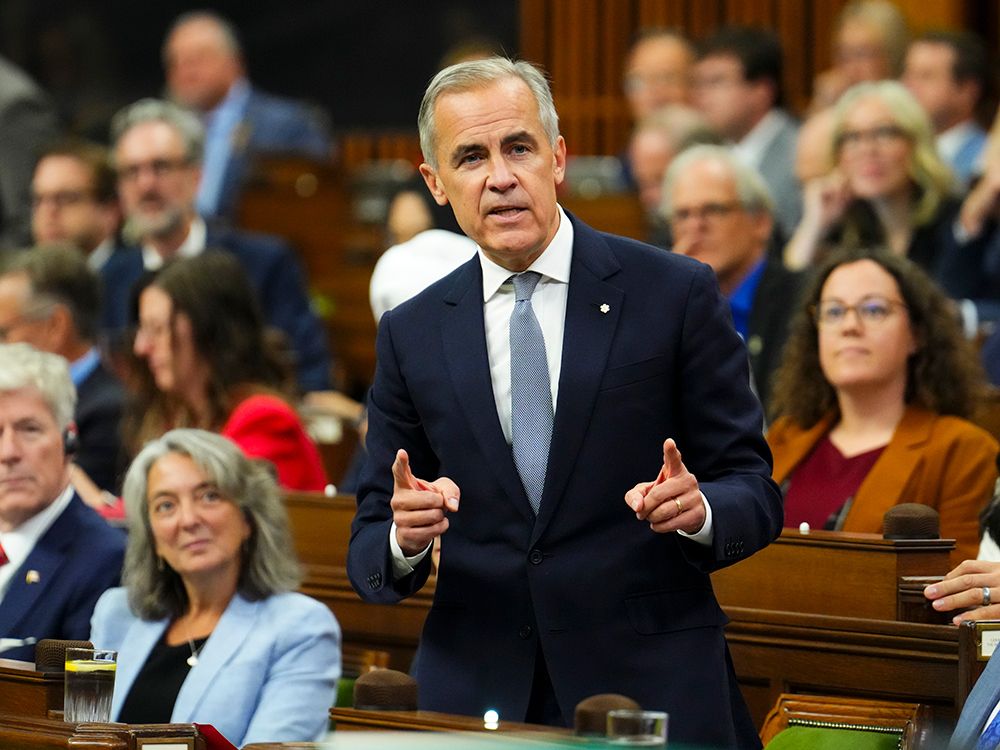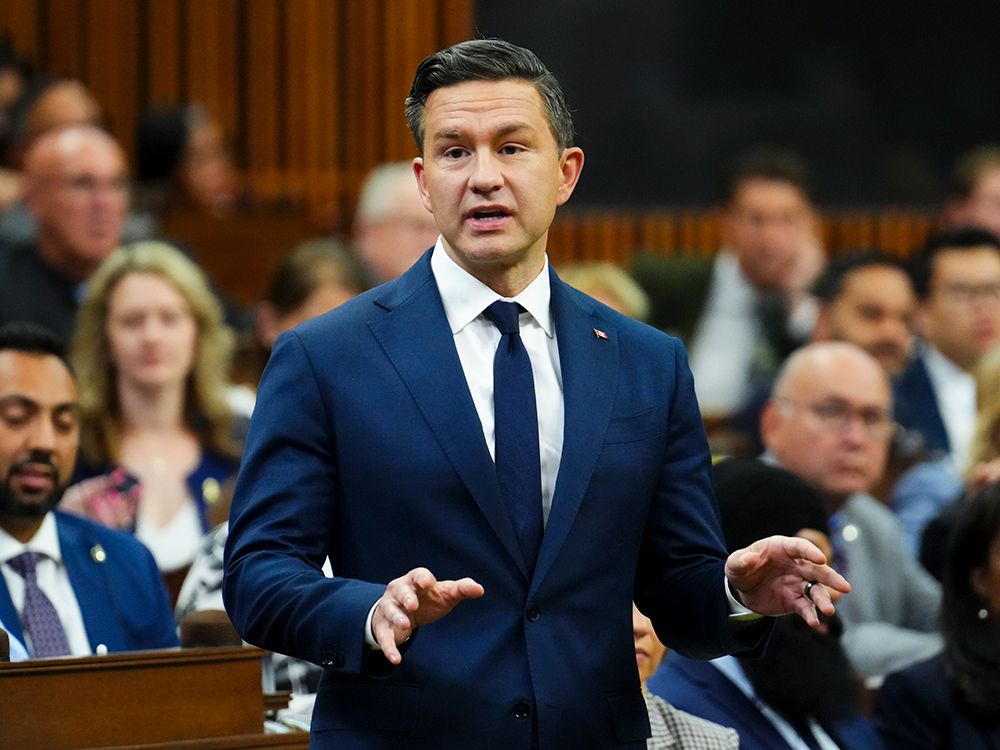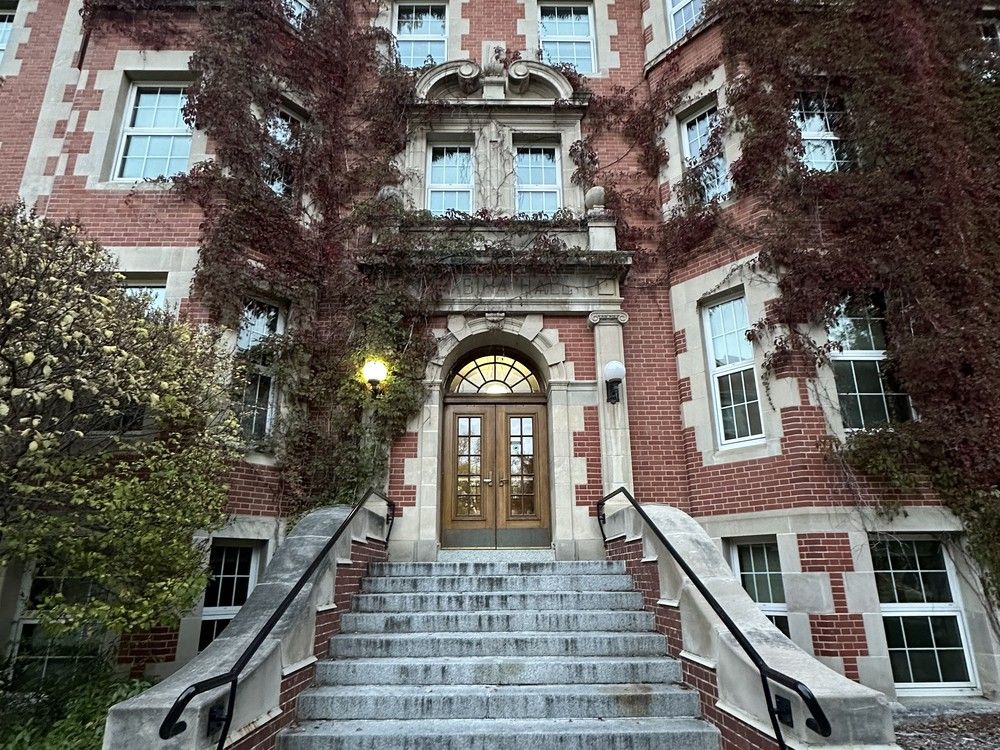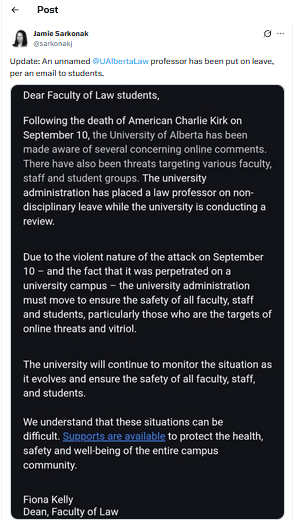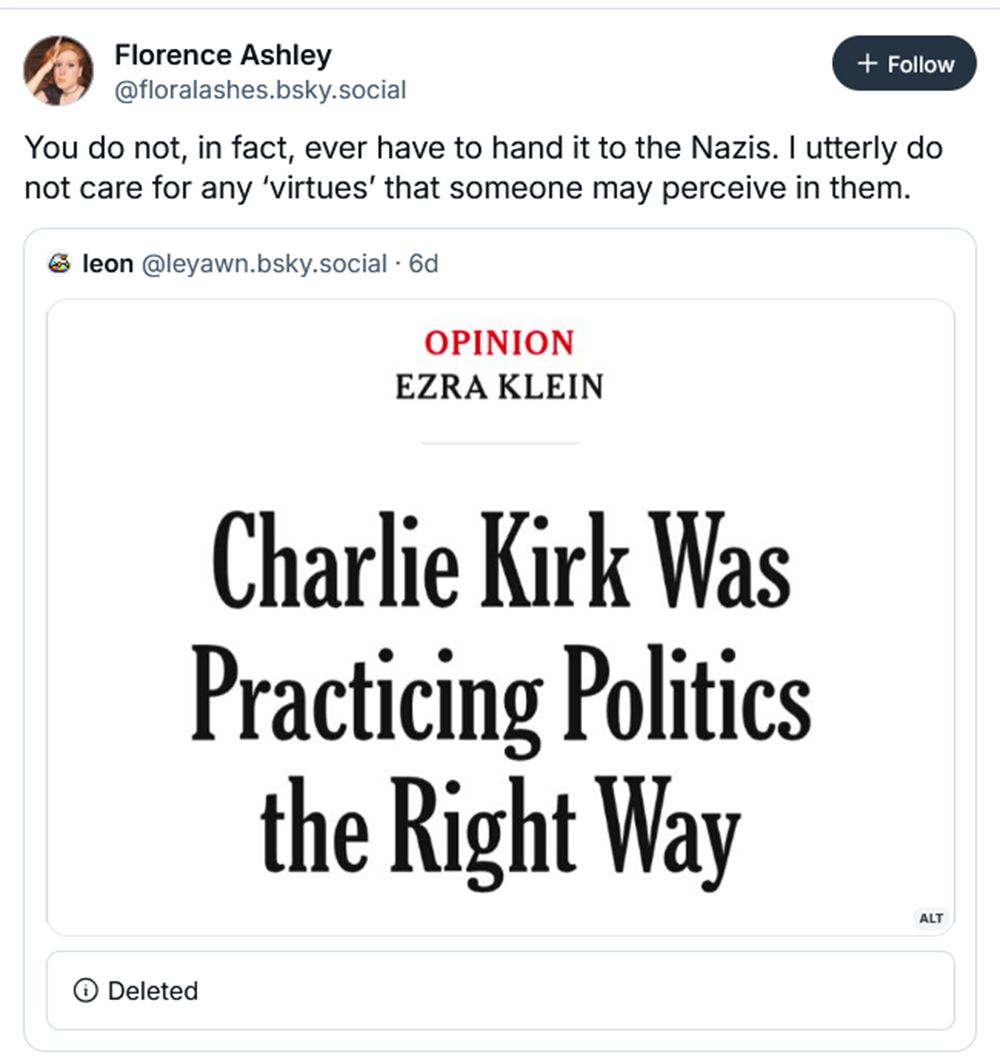
As Prime Minister Mark Carney’s Liberal government embarks on its first full parliamentary session, Canadians are sending a clear message: The honeymoon is over and we need to see more results.
“The fall will be critical,” wrote David Coletto, chief executive of polling firm Abacus Data in a recent report. “Canadians need to see and feel momentum, on prices at the grocery store, on rent and mortgage relief, on the basics of economic security. Otherwise, the alignment Carney has built could turn into frustration, and then disillusionment.”
According to a recent
Postmedia-Leger poll
, the Liberals still lead the Conservatives by nine points (47 per cent compared to 38 per cent), but satisfaction with the Carney government has been slipping since July.
The margin between satisfied and dissatisfied Canadians is shrinking, said Andrew Enns, Leger’s executive vice-president. “Month to month haven’t really been big changes. But when you look at the beginning of summer to where we are now, at the beginning of summer they had a 22-point gap advantage in terms of satisfied versus dissatisfied. That’s narrowed to 13.”
Coletto said the trend is like the shine coming off a brand-new car. “There’s still a new car. It still has that new-car smell, but it’s starting to wear a little bit.”
Earlier this year, Carney outlined seven government priorities: Lowering costs, housing affordability, economic unification, sovereignty, trade partnerships, fiscal restraint and immigration.
“We are all here to get big things done for Canadians at a scale and pace that hasn’t happened for generations,” he told his Liberal caucus colleagues in Edmonton on Sept. 10.
Smooth sailing on any of these matters is unlikely. Some of the key agenda items — housing, for example — are long-term problems that require long-term solutions. National Post has spoken to a wide range of government insiders and analysts to gauge the key issues that will make or break the next 100 days for Carney.
Philippe J. Fournier, founder of 338Canada, an electoral statistics and projections website, expects the Liberal government will find the next four months to be more challenging than the first four.
“The Liberals do not have the luxury of time,” said Fournier. “They have a new leader, but they’re still the same party in its fourth term.”
The return to Parliament of Conservative Leader Pierre Poilievre means the government will no longer solely set the political agenda. Poilievre, who will need to keep one eye on his January leadership review, has already been turning Canadians’ attention toward his party’s favourite issues, such as crime, affordability and fiscal policy.
The minority Liberals, with almost all of the opposition now concentrated in the Conservative and Bloc
Québécois
camps, may find it difficult to get agenda items through parliamentary committees.
“We used to have gridlock in the House,” said Progressive Senator Peter Harder, in reference to previous minority governments. “Now it will be in committee.”
Pierre’s in the House
Poilievre is back in the House of Commons as the new MP for Battle River—Crowfoot in Alberta, ready to take on the Carney government. When asked by the National Post on Sept. 5 what his strategy would be to go up against Carney in the fall session, Poilievre said his intent would be to focus on “putting paycheques in Canadians’ pockets, putting criminals in jail, slamming the brakes on Liberal immigration, getting shovels in the ground and getting our country back on its feet.”
Poilievre also stressed he would show that the prime minister is a lot of talk and no action.
“He’s gotten absolutely nothing done this summer other than shuffle a lot of papers and hold a lot of meetings while Canadians lose their jobs, can’t afford food and are unable to buy homes, and we will be holding him accountable for that.”
Sept. 15’s question period saw Poilievre go up against Carney by comparing him to former prime minister Justin Trudeau, who he said “was making excuses about breaking promises” and “running massive deficits,” and by blaming Carney for the high cost of living and rampant crime in the country — just like his predecessor.
Marci Surkes, a former senior political adviser to Trudeau, said Carney is “going to be tested day in and day out in the Commons in a way that he has really not yet been,” and that could spell trouble for him.
“Canadians have seen Mr. Carney on some occasions lose his cool … under pressure and under questioning from journalists. So, there will be a discipline that has to be exercised by Mr. Carney in the face of Mr. Poilievre,” said the chief strategy officer at Compass Rose.
“Going up to the office every day and being punched in the face is difficult for anyone and Mr. Poilievre is very good at throwing punches,” she added.
One Liberal MP said Poilievre remains a “message machine” and Carney’s team cannot ignore his ability to set an agenda or frame a debate.
One clear example is Poilievre’s recent proposal to scrap the
temporary foreign worker program
, citing youth unemployment. Carney’s first reflex, when asked about it during his cabinet retreat, was to pivot to the concerns of businesses, saying their No. 1 issue is U.S. tariffs and their No. 2 issue is access to those temporary workers to fill positions.
“If you’re an unemployed Canadian or your kid is unemployed and they’re living out of your basement still … it doesn’t exactly inspire the sense of this guy gets your problems and is on your side,” commented a Liberal source.
A senior Conservative source agreed those comments were an example of Carney going into “corporate mode” and showing he was “out of touch” with regular Canadians.
It wasn’t until days later that Liberals came to the prime minister’s defence. Former immigration minister Marc Miller accused Poilievre of stirring up “anti-immigrant sentiments,” while former Liberal staffer Sharan Kaur, who worked for former finance minister Bill Morneau, called the proposal a “dog-whistle” in
an opinion piece
.
Then, there’s the issue of crime, which cost Liberals precious seats in the Greater Toronto Area in the last election — and likely
cost them their majority government
.
So, it’s no coincidence that Poilievre has been pounding the pavement in the Toronto suburbs — where home invasions and assaults seem to make headlines every other day — with
proposals related to public safety
.
The federal government is looking to table legislation this fall to enact stricter bail laws, something premiers across the country have been pushing for a long time. The general idea for the legislative session, according to Liberal sources, is to get some “easy wins” with issues that enjoy cross-partisan support and do not cost a lot of money.
A senior Conservative source described the House to be Poilievre’s “happy place,” an area where he is most at ease. Fournier, of 338Canada, said the silver lining for Liberals is that Poilievre remains a polarizing figure for Canadians and seems incapable of swaying voters from other parties like Carney did in the spring.
Cracks in the coalition
As Carney steers the Liberals to the right, a challenge for his team this fall will be his own government’s left flank.
There are some warning signs of trouble for a Liberal coalition that has reunited progressives, centrists and Quebec federalists. “We have to send a signal that we’re the Liberal Party, not the Conservative Party 2.0,” said one Liberal insider.
Carney has been borrowing heavily from Poilievre’s playbook in rolling back several of his predecessor’s climate policies. He has not only axed the consumer carbon tax but paused the electric vehicle mandate for 2026 and is looking to amend clean fuel regulations. He is also openly promoting oil pipelines.
That seems to be a far cry from Carney’s not-so-distant past life as the United Nations’ Special Envoy on Climate Action and Finance, where he stressed the urgency of addressing climate change and championed climate initiatives such as carbon pricing.
Carney said his government intends to release a “new climate competitiveness strategy” this fall that would focus on “results over objectives and investments over prohibition.”
Some Liberal MPs are wondering if that means backsliding on climate commitments, including
Canada’s emissions targets
for 2030 and 2035.
“Personally, I don’t want to see those targets reduced,” said former immigration minister Miller at the party’s caucus retreat in Edmonton on Sept. 10.
Nathaniel Erskine-Smith, who was also recently dropped from cabinet, took a shot at the contents of Carney’s book: “If you read Value(s), it would be a very odd thing for us to do.”
Green Party Leader Elizabeth May even offered to “pony up” and buy Carney a copy of his book so he can re-read it.
From the moment Carney entered politics, many Canadians made assumptions on who he was and what he represented for them, and he still managed to win over 43 per cent of the electorate, said Carney’s campaign director, Andrew Bevan.
“I think it’s interesting, to a certain extent, the degree to which Canadians believed they knew what they were voting for when it came to Mark Carney,” he said.
“But let’s be frank — we’re in a moment where it’s important to get some of these initial and immediate things right in the face of what’s coming at us from the U.S., so that we are then in a position to be able to do a whole range of other things domestically,” he added.
Carney was criticized for the quick pace at which his government passed C-5 — the Building Canada Act to fast-track major projects — without proper consultation with Indigenous groups. He ultimately held three summits over the summer in attempts to alleviate those concerns.
His government also drew fierce criticism from union leaders for using Section 107 of the Canada Labour Code to end the
Air Canada flight attendants’ strike
less than 12 hours after it started. The move backfired, as the flight attendants, mostly women, refused to comply with the back-to-work order and Air Canada returned to the bargaining table.
Lana Payne, national president of labour union Unifor, said that the use of Section 107 — which also happened under Trudeau — is conditioning employers to expect the government to intervene on their behalf and is eroding workers’ trust in the collective bargaining process.
“Hopefully, there’s been a very big lesson learned,” she said of the Air Canada conflict.
Then there is the fall budget, which Carney said would be a mix of cuts and investments. Carney’s mention of “austerity” raised eyebrows among Quebec Liberals, who know just how toxic that word can be in the province.
But a source close to Carney said he corrected himself afterwards to use the word “responsible.”
Supriya Dwivedi, a former senior adviser to Trudeau, said the grumblings from various left-leaning groups — the labour movement, environmental groups and Indigenous groups — coupled with an austerity budget could anger more groups and stakeholders and snowball into a larger issue.
“I think over time, the more that builds, the bigger a problem it’s going to be for them.”
Dwivedi also warned about the lack of women and diversity in the Prime Minister’s Office — she calls it a “bro-ffice.”
“A lot of criticism tends to get thrown at the Trudeau government for being ‘too woke’ or being too performative and too virtue-signalling,” she said. “But the reality is that you need a diverse team because it produces better outcomes and because you’re getting a more informed analysis as you make some very, very important decisions.”
Push-and-pull budget
As a seasoned economist, Canada’s new prime minister is fully aware of the long-term costs of piling up massive debt.
But he’s also made it clear that Canada must prioritize investments in pricey infrastructure and tax cuts to make the economy more competitive in the long term — even if that adds to his first budget’s hefty deficit and Canada’s broader fiscal turmoil.
That apparent incongruity will make the government’s inaugural budget, expected to land on Nov. 4, one of the most significant in recent memory.
The government has already indicated that it will attempt to balance spending and cutting through a push-and-pull exercise. Carney will attempt to cut spending deemed unnecessary, such as bloating in the bureaucracy, while boosting spending on investments to improve Canada’s competitiveness, productivity and security.
Big projects such as ports, roads and perhaps pipelines are considered more important than ever because of the Trump tariffs. But the costs, along with other spending hikes that have been announced, will add tens of billions of dollars to the national debt that has now topped $1.2 trillion or about 42 per cent of Canada’s gross domestic product (GDP).
In a
July report
, the C.D. Howe Institute forecast a staggering deficit of more than $92 billion this fiscal year, almost double what was forecast by the government just a few months earlier. That would be the second-largest deficit in Canadian history, topped only by the $327.7-billion shortfall from the pandemic year of 2020-21.
The think-tank attributes much of the government’s declining fiscal health to increased spending on defence and other items, the economic effects of the Trump tariffs, cuts to personal income tax and the GST for first-time homebuyers, and the elimination of the digital services tax.
Based on current and largely optimistic variables, the report says, federal deficits will remain above $71 billion a year during each of the next three years. In the fiscal year 2028-29, the deficit is expected to be greater than three times what the government forecast in its last federal budget.
But that budget was released well over a year ago. The government took the highly unusual step this year of waiting until the fall to release its annual budget, more than halfway through the fiscal year.
The C.D. Howe Institute suggests the government move swiftly to address “runaway spending, perpetually high deficits and debt, and vulnerabilities Canada should avoid at a time of severe economic challenges.”
“We haven’t been competitive for a long time,” said Don Drummond, one of the authors of the report and a former senior executive at the Department of Finance. “One way or another we’re coming to a disaster.”
The institute says the Liberal government should start by ignoring some of its own platform promises, make deeper spending cuts, increase revenue from less harmful taxation such as the GST, and cut federal transfers to provinces and territories. Drummond said the government has provided little or no evidence that it’s prepared to take the bold action that is needed.
To date, the government’s promise to reduce operational spending has been the most notable cut. New Finance Minister Francois-Philippe Champagne has told government departments to trim 7.5 per cent from their 2026-27 budgets, followed by another 2.5 per cent the following year and another five per cent in 2028-29. This is expected to save $25 billion a year when completed.
Spending cuts are a touchy subject for many voters. On the other hand, many voters see cuts as governments acting responsibly.
Elbows up or down?
Pollster Jean-Marc Léger told the federal cabinet huddled in Toronto on Sept. 3 that while U.S. President’s Donald Trump’s tariffs constituted the No. 1 issue during the election, that matter now ranks fourth after inflation, cost of living and access to affordable housing.
The idea that the “elbows up” mindset had taken a back seat to bread-and-butter issues came as a surprise to the government, Léger candidly admitted to reporters afterwards.
Since he was elected in late April, Carney set multiple deadlines for a new economic and security deal with the United States — and blew past all of them. But it hasn’t been for lack of trying.
Dominic LeBlanc, the minister responsible for Canada-U.S. Trade, has been racking up the mileage to Washington, and Carney’s most trusted aides — chief of staff Marc-André Blanchard and clerk of the Privy Council Michael Sabia — have been involved in negotiations since they started in their new roles in July.
Carney said on Sept. 15 that he is in regular contact with Trump and they either talk on the phone or exchange text messages.
Surkes, the former adviser to Trudeau, said she doesn’t fault Carney’s office for focusing their efforts on this issue. “Let’s face it, this is not only a U.S.-Canada issue. This is the United States of America upending the entire trading system and, in many respects, the international world order that we have known since the Second World War,” Surkes said.
“So, this is no small potatoes. It’s obviously critical for the government to maintain a clear focus on Washington and to have our interlocutors as actively engaged as possible.”
Carney has changed his tune in recent weeks, insisting that Canada has the lowest average tariff of any country in the world and that 85 per cent of trade south of the border is tariff-free, thanks to the North American free-trade agreement known as CUSMA.
That hasn’t gone over well with those who represent sectors most affected by tariffs, such as steel, aluminum, lumber and automobiles.
A Liberal MP admitted in an interview that the perception that the federal government is “elbows down” could catch steam in the coming months if the government is not careful.
Ontario Premier Doug Ford and union representatives have been publicly calling for Ottawa to increase the pressure on the Trump administration — not de-escalate it, as Carney has done in recent months by removing the digital services tax and retaliatory tariffs on CUSMA-compliant U.S. goods.
“I get concerned when the message is that somehow we have the lowest tariffs and so we’ve got the best of the worst deal here,” said Payne, the Unifor leader, in a recent interview with the National Post.
Hamilton, Ont., Liberal MP John-Paul Danko said the steel industry in his community is “in dire straits at the moment,” with 50 per cent tariffs on Canadian steel to the U.S. He was looking to the government to provide funding and supports.
He got his wish on Sept. 5, when Carney announced a $5-billion strategic response fund for sectors affected by tariffs, liquidity relief for small- and medium-sized businesses and a “Buy Canadian” policy that would help industries navigate choppy waters.
“I understand the sentiment publicly that residents and labour representatives would like to see a bit more of a forceful approach. To be honest, I’ve been advocating for that as well, but it is a very sensitive negotiation,” said Danko.
Even though many Canadians are still boycotting U.S. produce at the grocery stores and refraining from travelling south of the border, they have come to accept that “Trump’s going to be Trump,” said Coletto of Abacus Data. He said the onus this fall will be on responding to Canadians’ anxieties about their standard of living and job security.
But with the Prime Minister’s Office consumed by its relationship with the U.S. and how to make Canada’s economy more resilient, it remains to be seen if the Liberals have the bandwidth to respond to people’s more pressing economic concerns.
Friends and frenemies
“The world has changed,” Carney has said on more than one occasion.
With Trump leaning toward isolationism and a protectionist trade policy, the Canadian and U.S. governments’ views of the world have never been more different.
The Liberal platform was surprisingly blunt about its vision for foreign policy: “At a time of rising global conflict and authoritarianism, there are those who are stepping back from global leadership. Canada believes in open co-operation, in the free flow of goods, services and ideas,” the document stated.
“If the United States no longer wants to lead, Canada will.”
The new prime minister made it perfectly clear that Canada needed refurbished trade links and improved friendships abroad. After being sworn in as prime minister on Friday, March 14, Carney didn’t let the weekend pass before he headed off to Europe — not Washington — for his first official visit.
“I think his comfort zone is very much in that orbit,” said Fen Hampson, a professor of international affairs at Carleton University in Ottawa.
Carney has been active, even bold, on international hot spots, such as his pledge to
recognize a Palestinian state
and support Ukraine in its war with Russia. But the more significant change, foreign policy analysts say, has been the renewed focus on trade and security instead of virtue signalling and advancing progressive ideals abroad.
That has meant making nice with two of the world’s most populous — and contentious — countries. As host of the G7 leaders’ meeting in Kananaskis, Alta., in June, Carney made waves by
inviting Indian Prime Minister Narendra Modi
, a non-member of the club, whose government has been accused by Canada of extortion, coercion and even murder.
But with a population estimated at 1.45 billion, India is important for Canadian exports of agricultural products, mineral fuels, oils, fertilizer and forest products.
Carney may meet with Chinese President Xi Jinping if both attend the annual summit for APEC (Asia Pacific Economic Cooperation) in South Korea in late October. Carney’s emphasis on trade suggests that Canada will prioritize getting that
strained relationship
back on track.
That, too, will be good news for Canadian exports. But Carney will need to offer something in return, such as a green light for Chinese electric vehicles (EVs), which the government last year slapped with a 100 per cent import tariff. Those vehicles would save consumers money and add to the number of green vehicles on Canadian roads but would hurt the already-threatened Canadian auto sector.
“Carney will be trying to cut a whole bunch of deals,” said Hampson, “so we’re less vulnerable to the U.S.”
Which big projects?
Wheels are in motion to speed up major infrastructure projects with the
first short list
in the “Canada Strong” plan announced by Carney on Sept. 11. It included a liquefied natural gas terminal expansion, two critical mineral mining projects, a small nuclear modular reactor project and the expansion of the Port of Montreal — all projects that are in advanced stages. Their referral to the Major Projects Office (MPO) is meant to clear the last regulatory hurdles so they can get over the finish line.
Heather Exner-Pirot, a senior fellow and director of Energy, Natural Resources and Environment at the Macdonald-Laurier Institute, said those are good projects but they don’t quite meet the moment.
“The only thing is that expectations were raised, and getting five very advanced projects a couple months closer is great, but it’s not nation-building,” she said.
Carney said those five initial projects will generate more than $60 billion for the Canadian economy and create tens of thousands of jobs. But he stressed they are “just the beginning,” and he would have more projects to announce by mid-November.
Carney also singled out additional projects that are at earlier stages and could require further work before approval, namely Wind West Atlantic Energy, the Pathways Plus carbon capture and storage project, an Arctic economic and security corridor, Port of Churchill Plus, and the Alto high-speed rail corridor between Toronto and Quebec City.
That list of longer-term projects, said Exner-Pirot, has “a lot more potential for boondoggles,” and she doubts they will be ready to be approved by mid-November.
The Port of Churchill Plus project, for instance, plans to “expand trade corridors with an all-weather road, an upgraded rail line, a new energy corridor and marine icebreaking capacity,” with the goal of expanding export capacity in the North through Hudson Bay. This will help trade with Europe — including liquefied natural gas.
But as Barry Prentice, professor and director of the University of Manitoba Transport Institute, explains, the current port infrastructure is along the Churchill River, which is full of wildlife such as beluga whales, and could not sustain heavy shipping traffic. Another issue is the depth of water in the river, he said, which would not work for bigger ships.
That would mean a new deepwater port would have to be built along the Hudson Bay coast, something Carney has alluded to in recent weeks, along with rail and pipeline infrastructure to get goods to and from the new port.
Prentice said another issue with the Port of Churchill has always been the shortness of the ice-free navigating season. Currently, the season is about four months. With enough icebreakers, the port could easily be kept open year-round, he said.
Then there is the issue of land access to an isolated northern community. “If we’re going to be serious about a real industrial port, then we have to look at the whole corridor, the whole supply chain and that, I think, will include the railway,” Prentice said.
After amping up expectations, Canadians might grow impatient if major projects take too much time.
Coletto, of Abacus Data, said it will take years before the first major projects are completed and the public feels the effect of them on the Canadian economy. “It’s partly a communication challenge, and they need to connect the dots between all the things that they’re doing and the ultimate goal,” he said.
Exner-Pirot said what would be even better would be to remove existing regulatory hurdles — such as the Impact Assessment Act and the tanker ban on the West Coast — that prevent businesses from wanting to invest in Canada in the first place.
Housing quagmire
There’s widespread agreement that Canada has a major housing problem and action is required. Where the dissent begins, unsurprisingly, is what to do about the problem.
With the Carney Liberal government unveiling a new program that it hopes will address the housing shortage and affordability issue, analysts say the problem is getting worse.
The Canada Mortgage and Housing Corporation (CMHC) recently forecast that the total number of housing starts this year will be about 237,800, down from 245,367 in 2024. The decline is expected to continue, with no more than 227,734 next year and 220,016 in 2027.
So, why would the supply of new homes not rise at a time when there is peak demand? Paul Smetanin, president of the Canadian Centre for Economic Analysis and a longtime analyst of the housing sector, blamed too many players engaged in too much short-term thinking.
Municipalities control zoning, land use, urban planning and approve housing developments. They’re also responsible for water, sewers and other services that form a costly and time-consuming part of the process for new builds. Those building charges also represent an important revenue source for local governments.
Municipalities are also the first target of backlash when a neighbourhood is overrun with new builds, especially when connected to a zoning change or a controversial project approval.
Provinces and territories are responsible for housing legislation, regulations and building codes. They also fund and manage public housing.
For its part, Ottawa is responsible for national housing strategies, signing cheques to provincial non-profits through the CMHC and Indigenous housing.
Developers, meanwhile, generally don’t build because of social needs. They build so they can make maximum profits. If that means sitting on a property for a number of years because the market conditions aren’t right, skilled workers aren’t available or development charges and taxes are too high, that’s what they’ll do.
Taxation from all levels of government often accounts for more than one-third of the cost of a new home.
It’s a jurisdictional quagmire.
Mike Moffatt, who was an economic adviser to Trudeau, wrote earlier this summer that governments “do not appear to be getting the message, nor do they seem willing to take the necessary steps to address the crisis.”
The Liberals promised during the federal election campaign that 500,000 homes would be built annually over the next 10 years — a level of residential construction not seen since the years following the Second World War.
On Sept. 14, the day before Parliament returned, Carney
announced Build Canada Homes
, a $13-billion program designed to get more homes built in Canada more quickly. The program will have the mandate to build and finance affordable homes for middle- and lower-income workers, with the focus on transitional, community and affordable multi-unit housing.
Carney said the $13 billion will reduce the upfront building costs by providing flexible financial incentives to attract private investment and trigger large projects.
The program’s first big step will be a partnership with Canada Lands Company to build 4,000 factory-built homes on six sites on federal lands.
But the Canadian Home Builders’ Association is among those skeptical about how influential the new program will be or how much effect it will have on the government hitting its lofty target of 500,000 new homes.
“Creating yet another federal entity does not seem a good use of resources,” the association wrote last month in its pre-budget consultation document.
The Liberals also promised to eliminate the GST on new homes for first-time buyers, and to cut in half municipal development charges for multi-unit residential construction.
“(Canadians) want to see that the action has produced results,” said Tyler Meredith, a former fiscal adviser to two Liberal finance ministers, who believes the government will make the housing crisis a central part of its agenda for the fall and beyond.
The problem has traditionally been the long lag between the launch of a new housing policy and somebody moving into a new home — as much as a dozen years or more from when a plot of land has been identified for a new home, subdivision or apartment building.
Housing analysts say that timeline is pushed out even further if roads and key infrastructure such as sewer, water and electricity need to be added.
It’s a complicated issue made worse by increased interest rates, higher unemployment, higher labour costs and higher prices for steel, lumber and other materials impacted by U.S. tariffs.
Smetanin said Canada’s housing crisis has been created over many years of neglect and fixing it will also require at least a decade of concentrated effort.
“There’s no silver bullet to housing,” he said. “You can’t fix it right away.”
Battle to spend on defence
Ottawa has pledged to take its own defence, sovereignty and NATO commitment more seriously. “It’s a darker world,” Carney has said, and foreign threats are no longer constrained by distance. The U.S. has also made it clear it is interested in protecting its own interests, not anyone else’s.
“Canada can’t afford to be skimmers anymore,” said an Ottawa analyst who follows defence spending closely.
Canada has for many years made promises to meet NATO defence-spending targets of two per cent of GDP. In June, Carney promised that Canada would hit that target this fiscal year — five years ahead of schedule.
The government has taken steps to reach that mark. In March, Ottawa announced that it would spend $6 billion on over-the-horizon radar for the Arctic that was developed in Australia.
Carney also announced last month that military personnel would get pay hikes of as much as 20 per cent, part of a $9-billion federal investment in the military. Earlier this month, Canada moved the Coast Guard into the Department of National Defence, shifting another $2.4 billion to the defence pot.
The three moves add an estimated $17.4 billion to defence spending, although it’s unclear how much of it can be booked during this fiscal year so it would count toward the annual NATO spending target. To reach that two per cent target, the Carney government would need to spend about $19 billion more this year than last year.
One defence analyst said capital spending on new machinery would provide “the best of both worlds” in terms of accounting. NATO would book a long-term capital purchase immediately, while the Department of Finance (and the government’s budget) would account for it over the estimated life cycle of the machinery.
“Capital spending lets you have your cake and eat it, too.”
Despite that, the Carney government is unlikely to reach its NATO target this fiscal year, the analyst said, because military procurement is glacially slow.
And a bigger spending challenge looms.
Ottawa has promised to reach at least five per cent of GDP on defence spending by 2035, a commitment that will mean heavy investments in military equipment, likely new fighter jets, and building out Canada’s defence industry.
That will mean spending on infrastructure such as airports, ports, telecom networks and emergency systems that can serve both defence and civilian needs. Those investments are expected to account for about 30 per cent of the five per cent commitment.
With files from Christopher Nardi and Stuart Thomson.
